Through the eyes of award-winning wildlife filmmaker Peter Bassett
Exclusively for Tauck, join award-winning wildlife filmmaker and Tauck partner Peter Bassett as he takes you through the extraordinary experience of small ship cruising to Antarctica. Peter will describe the amazing varieties of wildlife and natural landscapes one might expect to see, and share stories from his filmmaking journeys to the “land of the austral sun.”
Peter has been a producer on many widely acclaimed landmark series with David Attenborough, including Life in the Undergrowth, Life of Birds, Life in the Freezer, and Nature’s Great Events. Invasion of the Land won Wildscreen Panda for Best Script, Golden Panda for Best Series, and was the first BBC NHU production to receive an audience appreciation index score of 90. He has over 25 years of experience managing productions with the BBC and is a specialist wildlife film producer with a 20-year track record in world class ‘blue- chip’ animal behavior films. Lion Battlefield won the Wildscreen Panda for Innovation and the six part series Predators is considered by many as one of the most groundbreaking wildlife series ever made.
Questions & Answers
Has there been a behavioral change in the penguin population due to the increased tours in Antarctica?
There has been a fair bit of research in this area, in recent years, and a Google search will provide papers/articles written on different species of penguins. There are a couple of articles on the Penguins international website and this one gives a good insight into wildlife tourism and penguin behaviour.
I also like to get information from the cool Antarctic website as this gives lots of useful information about Antarctica.
Can you recommend a good travel book to prepare for the trip and all the area has to offer?
I have so many books on Antarctica! However, if you are travelling to the Antarctic Peninsula I use The Antarctic Peninsula: A visitor’s guide by the British Antarctic survey, and the Antarctic cruising guide by Peter Carey. I always have Antarctica: A Guide to the Wildlife by Tony Soper as this is a more gentle read and easy to fit in a small bag. My copies are quite old but they have been re-published more recently.
Is there any location where tourist cruise ships actual can see Emperor penguins?
There are no places on our itinerary where we can reliably see Emperor penguins. We do not indicate there is any significant chance of seeing Emperors. We can virtually guarantee our guests will NOT see an Emperor penguin.
How would the covid19 Pandemic impact what happens on the Antarctica tour: lectures, Zodiac rides, walking on the peninsula?
Protocols for Covid19 are still being developed. We expect social distancing and personal protective equipment will be key aspects of keeping guests and crew safe. We also expect PCR testing and temperature and health screenings to be important aspects of a safe trip.
How many other cruise ships or tourists are present during the cruise season in Antarctica?
The number of ships visiting varies by year. We sometimes sail past other ships but we rarely, if ever find ourselves making landings when other ships are present. I.A.A.T.O. (International Association of Antarctic Tour Operators) works hard to manage schedules at landing sites in a way that minimizes the impact of tourists going ashore.
How many years has Tauck been going to Antarctica?
Tauck’s first Antarctic program sailed in the year 2000, so over two decades of operating there!
What type of power outlets are available on the ship?
Our ships are equipped with both a standard U.S. 110 volt and a European 220 volt, 60 cycle AC electrical outlet.
When is the best time to travel to Antarctica?
The Austral summer. Personally the best time of the summer is Dec, Jan, Feb, as chicks are born and tended to by their parents.
How long does it take to cruise through Drake Pass?
Ponant ships leave from Ushuaia and arrive at the South Shetlands around 48 hours later, depending on the weather conditions. They often land at Deception Island which is almost exactly 1000km from Ushuaia. (625 miles).
What causes the Drake Passage to be so rough and is there a particular season when it is calmer? If so, when?
Is can be rough as the ocean currents at this latitude meet no resistance from any landmass, as they circle the planet. This combined with the frequent high winds experienced there can create ‘interesting’ sea conditions. But modern polar cruise ships are designed to sail here. Ponant ships have large stabilisers that combat the rolling that can sometimes occur.
There is a site that I occasionally look at to check sea conditions. I have been lucky in that I have experienced more ‘drake lakes’ than ‘drake shakes’. I have experienced drake lakes before and after Christmas and so it is very tricky to predict what you’ll get. Now that I have found the right medication I really enjoy the passage especially with a reasonable swell as there are so many birds flying past the cabin window!
How many people will you have on board? Do you charter the whole boat?
We do not charter the entire vessel, instead we expect to have a little more than half of the 200 pax onboard.
How physically difficult is the tour?
Going ashore is by zodiac raft. One must be able to get into and out of the rafts. Most shore visits allow guests to walk as much or as little as they’d like.
Since this is the northernmost part of the Peninsula what is happening with the melting of the glaciers?
You might like this link as it is the most up to date paper I have come across. Scientists believe climate change has led to a rapid glaciological response, with 87% of glaciers around the Antarctic Peninsula now receding, and many glaciers thinning.
Are Icebergs underwater more or less 90% of its total size?
I get asked this a lot… and it is all about the density of ice! In scientific terms the density of pure ice is about 920 kg/m3 (57 lb/cu ft), and that of seawater about 1,025 kg/m3 (64 lb/cu ft), and so typically about one-tenth of the volume of an iceberg is above water. A glaciology expert on the last Tauck trip said that the actual figure is 89% and not 90%, and so 89% is submerged and we only see 11% of it above the surface, not that I can notice the additional one percent as we’re cruising past!
Are all passengers with Tauck?
Our cruise partner, Ponant, also sells to their clients.
How would you compare the Arctic with the Antarctica?
That’s a tricky question to answer as they are such different wildife experiences for me.. and I loved visiting both places for different reasons. The Antarctic wildife did not evolve with man and so they are generally very tame and easy to see. Visiting a penguin colony is practically 100 percent guaranteed as many are in sheltered waters and easily accessible. In the arctic many places have experienced a lot of hunting and the animals are shyer as a result… and may need a little more work to find them. There are no land mammals in Antarctica but you have the chance of seeing polar bears, reindeer and arctic foxes amongst others on arctic trips. If you are a polar exploration nerd like myself, there are incredible survival stories to discover in both locations… Shackleton and Scott are the explorers most often talked about but please read about Nansen and Amundsen to name but two… incredible survival stories!
Do you go thru the Drake Passage twice, once on the way out and once on the way back?
Yes.
Do the Pacific and Atlantic meet in the passage?
Yes, and one more too! The Drake Passage, is where the Atlantic, Pacific, and Southern seas converge, and because the currents here meet no resistance from any nearby landmass, they’re some of the roughest in the world
Does one see polar bears on the Tauck trip?
Not on the Tauck trip to Antarctica. Polar Bears are found in the Arctic.
Whose jurisdiction is it under/caretaker of the area?
Antarctica is not owned by any one nation, but a number of sovereign countries have made territorial claims to certain areas. Antarctica is governed internationally through the Antarctic Treaty system. The Antarctic Treaty was signed in 1959 by 12 countries who had scientists in and around Antarctica at the time.
It’s important to realize that Antarctica is the only continent without indigenous human inhabitants. A recent census calculated that there are scientists and staff from around 30 countries on about 70 bases (40 year-round and 30 summer-only), with an approximate population of 4,000 in summer and 1,000 in winter.
Is there any age restriction on the trip to Antarctica?
Being fit is the determining factor, not ones age. A health information sheet is required by our cruise partner Ponant.
Do small icebergs ever hit the ships?
Sometimes our vessel will make its way through ice but floating in the sea, but they avoid hitting icebergs.
Which Ponant ship do you use?
In ’21 we will use three of our partner Ponant’s ships: Le Boreal, Le Soleal and Le Lyrial.
Does the ship have icebreaker capabilities?
No. Our ships are rated Polar Class Ice Rating 1 C
What activities would people typically do on or off the ships?
Many relax and read, but keen naturalists and photographers are often on deck or on shore looking at the landscapes or looking for animals every moment they get!
Does Tauck have its guests always leave the ship to walk on the ice shelves?
When visiting the Antarctic Peninsula there are good opportunities to go ashore (weather and sea conditions allowing). On every Tauck trip I have been on I have visited many penguin colonies, and visited scientific bases as well as undertaken a hike or two in impressive landscapes. It is not 100 percent guaranteed to do everything as every Antarctic cruise is an expedition and therefore the schedule is flexible. Every cruise for me has been different, had unexpected surprises, been exciting, and I’ve enjoyed every one of them! Many birds breed around the Antarctic peninsula, as most of the snow free land in Antarctica in summer is found here. I have not walked on an ice shelf as these are not found close to the locations we visit… but you may have to walk over snow to reach some penguin colonies… and safe routes are designated by the expedition staff. But I have rarely had to walk in deep snow or over ice.
Is it dangerous to approach the icebergs considering the large sections of ice collapsing into the sea?
You’re right, icebergs often split and even roll over completely when they melt and large chunks fall off. That is why ships keep a safe distance and zodiac drivers are always aware that if blocks do drop off… they might create waves… and so always have enough time to react and drive to safety.
What kind of temperature swings will you get?
The northern Antarctic Peninsula has a maritime Antarctic climate, and so is the mildest part of the Antarctic. Temperatures are warmest in January, averaging 1 to 2 °C (34 to 36 °F), and coldest in June, averages from −15 to −20 °C (5 to −4 °F). Along the Antarctic Peninsula, temperatures as high as 15 °C (59 °F) have been recorded, though the summer temperature is below 0 °C (32 °F) most of the time.
I often do not have to wear gloves, but when you add wind chill to these temperatures things can feel very chilly, and change very quickly and so layering of clothes, a good jacket and gloves are very important.
Are the penguins afraid of humans?
It’s not that easy to tell if a penguin is afraid… apart from when it runs away. See this tourism / penguin link.
I also like to get information from the cool Antarctic website as this gives lots of useful information about Antarctica.
There are very sensible IAATO rules to follow when visiting penguin colonies – don’t approach within 5 metres, avoid penguin walkways and never run or move quickly and startle them. However, if you stop and remain quiet you will discover that many of the penguins are curious and will ‘check you out’. I’ve had them walk over to me and peck my glasses!
When exactly (what month) were you there for the first time? Asking because the first picture of your first journey seemed to show that things can turn green there.
I was visiting Deception Island in January. People often mistake the green in the photo as grass but it is in fact a green algae called Prasiola crispa. It is abundant on this spectacular colony of Chinstrap penguins … known as Baily Head.
In the 1970’s primary form of communication at least many Navy personnel was volunteers using Ham Radio! What is primary way for communication today? Satellite Telephone?
On remote filming trips we always have at least one, usually two satellite phones with us .. just in case. I also take a Garmin GPS device, and on occasions a BGAN satellite terminal.
The ground looks very uneven. How easy is it to walk on this land?
Walking surfaces vary widely and some are easier to walk on than others. Aboard the vessel the expedition leader and tour directors can provide descriptions of the days walking. We can be walking on sandy beaches, on paths through snow, over gravely scree.
How much of the ice ledge has melted?
I’m not sure which ice ledge you are referring to… did you mean ice sheet or shelf? Most of the world’s ice shelves are found around the coast of Antarctica. In recent years, ice shelves on the Antarctic Peninsula have experienced rapid disintegration.
You might find this website will provide you with the information you are after.
How many days is the trip?
This is a 12 night, 13 day program with 2 nights in Buenos Aires and 10 nights aboard our vessel.
How much time do you spend on the ground?
Most landings that I have been on are around 1 hour 15 to 1 hour 30mins, with two outings on most days when on the Antarctic Peninsula. Sometimes this will be a shore landing followed by a zodiac cruise in order to get a better view of glaciers and ice-bergs.
If there are 200 people on the ship and only 100 can be on shore at once, does everyone get a chance to go ashore?
Yes, time ashore is managed by our expedition leader very effectively.
Do you see any mammals?
Yes, marine mammals; seals, sea lions, whales.
Why do the penguin feet not freeze?
The penguin leg muscles are nestled into their bodies protecting them from the cold and long tendons extend down to their feet to control movement. It is thought that certain arteries in the leg can adjust blood flow in response to the temperature in their feet, and allow the foot just enough blood to keep it a few degrees above freezing.
There is a good description of how penguins keep their feet (and themselves) warm within this general outline of how penguins don’t freeze to death!
Do the penguins have any enemies?
Yes, chicks and injured birds can be picked off by predatory birds like skuas or giant petrels.. I have seen predation by both of these predators whilst visiting colonies. They wait for parents to be off guard at the nest, and look for any signs of weakness in the returning adults.. like a limp or blood stains. This is one of the reasons that visitors must keep their distance and not startle the penguins. Leopard seals wait off penguin colonies and ambush adults as they swim back to their colonies. and many congregate off shore when the chicks are fledging. Some seals can take a half dozen chicks in a day.
Killer whales will also take adult penguins. There is a small bird called a snowy sheath bill that will also predate penguin eggs.
What is the difference between an iceberg and a glacier?
Glaciers are formed by continual deposition of snow at a place where it does not melt. When a chunk of this glacier breaks off and floats in the water, it is known as an iceberg. You will see both on a cruise to Antarctica… there are also different names for different sizes of iceberg.
You might like to see this article for the differences, and this one for a nice outline of the different kinds of ice.
Is the penguin nest done by male penguin or female penguin, or both?
For the penguins you will see on the Antarctic Peninsula. both partners take turns incubating eggs, allowing each one to leave to feed for several days at sea.
However the Emperor penguin is amazing in that it is the only penguin to breed during the Antarctic winter, and when laid the female emperor penguin transfers the single egg to the top of her mate’s feet. The female goes to sea to feed while the male incubates the egg until it hatches.
How did you get started as a wildlife explorer? And photographer too?
I had a passion for wildlife films on the television and decided I wanted to be a wildife film-maker at University… and not undertake a PhD in avian physiology! I volunteered at the Slimbridge Wildfowl trust, a place visited by film-makers and I politely pestered them all until I was given a contact at the BBC and was offered a place as a typist in their library. A year later, and after a lot of jamming my foot in the door, I was given the opportunity to go into film production starting off on the first rung of the ladder as a researcher… and then over many years became an assistant producer, producer and series producer. The filming took me all over the world and one series ‘Life in the Freezer’ meant that I lived alongside penguin colonies for many months! I had always had an interest in taking photographs and was lucky to be able to visit amazing places during my filming trips. However, I am only an amateur photographer… I find it easier to hire the best camera operators as they do a much better job than myself.
How close are you to where the ship Endurance froze into the ice?
The Endurance sank in the Weddell sea on the eastern side of the Antarctic Peninsula. Due to the ice conditions here, the cruise ships don’t venture very far into it… however the year before last the Tauck trip did visit the Weddell sea and landed at Snow Hill island… the location of the cabin of the Swedish Antarctic expedition of 1901, around 300 miles away from where Shackleton’s ship is thought to rest.
Shackleton’s skipper, Frank Worsely, was a very skilled navigator and calculated that Endurance was abandoned at – 68°39’30.0″ South and 52°26’30.0″ West. But don’t expect to go to the Weddell sea as usually cruise ships go on the Westerm side of the Antarctic peninsula as there is a lot more wildlife there and easier ice free waters during most seasons.
What kind of geographical changes have you observed since you first started visiting Antarctica?
As my visits are so short and the places I go to vary it is difficult for me personally to measure any differences… but there is plenty of evidence to show how global warming is affecting Antarctica. On my first trips in 1991 there did seem to be a lot more snow falling in January than on recent trips when there seems to be more rain… but that might just be normal weather pattern variations.
Are there glaciers to see?
Lots! In fact there are over 1500 around the Antarctic peninsula. You can get views from shore landings, and from the ship, but my favourite is when the expedition staff put on zodiac cruises in bays surrounded by spectacular glaciers.
There is a complete inventory here.
Do you cross the Antarctic Circle?
No, not typically.
Why do seals have whiskers?
Whiskers are very important sensory organs and have many sensitive nerves that can detect the slightest movements in the water. In Antarctica, the Weddell seal uses its whiskers to detect the slightest vibrations in the water from passing prey, which makes this sense very handy when foraging. And, in the dark depths of the ocean, or during the long dark winter months, Weddell seals can rely on this additional sense to guide them through the icy Antarctic waters. Some think that the seals whiskers are like having an extra set of eyes or an additional sense of touch.
What is the latest time of the year to go?
Our cruises to Antarctica in 2021 are scheduled in January, February and December.
What is best month for chances of seeing Albatross?
I’ve seen albatross on every trip I have made during the Antarctic cruise season (Jan to end of March) when crossing the Drakes passage… except one! The key is having enough wind for the albatross to generate lift and fly. The one occasion I didn’t see one was when the Drakes passage was like a mill pond.. I never even saw a white cap on a wave. The albatross do not breed in Antarctica but on the sub-Antarctic islands like South Georgia, and so you will be seeing many birds on feeding trips collecting food for their chick many hundreds of miles away!
When walking on the islands, do you have to remove everything that you bring onto the island including human waste?
Yes, we follow the adage, take only memories (and film images!) and leave only foot prints. Nowadays we use WAG bags for removing human waste, but when I first visited Antarctica people used to dig a hole on the beach!
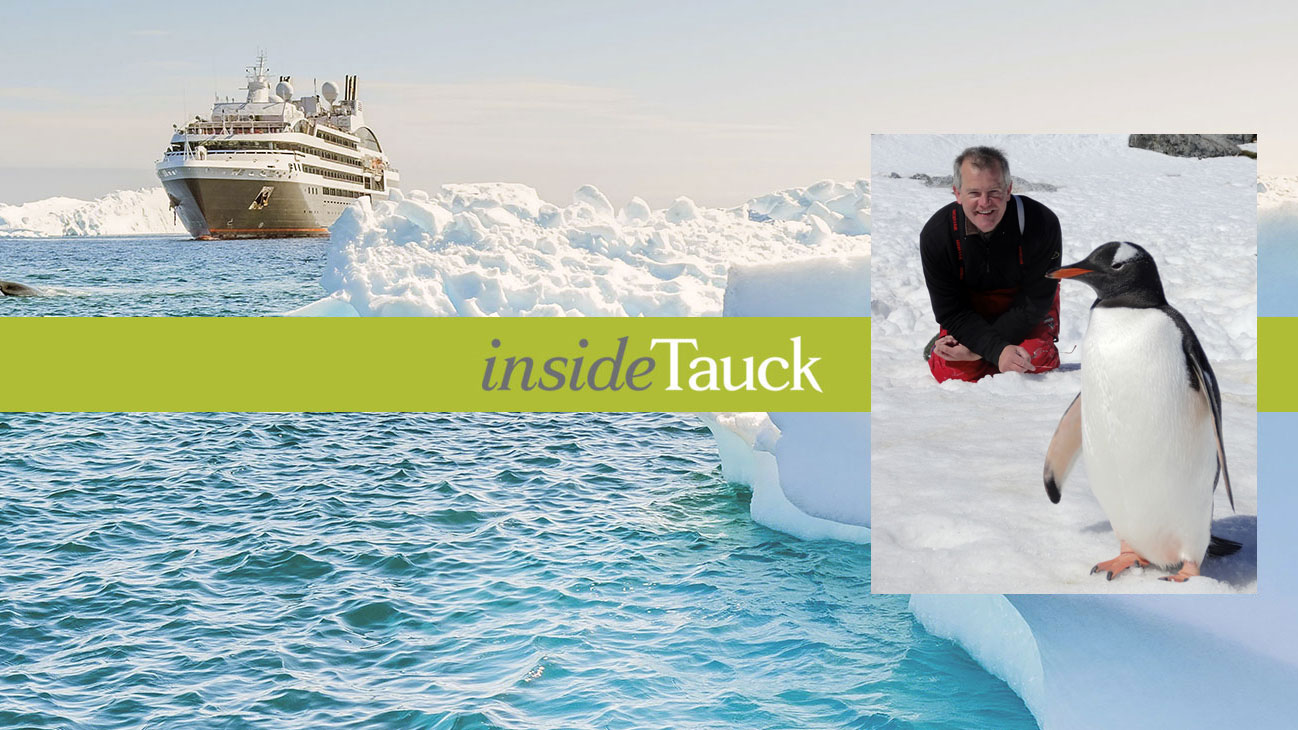
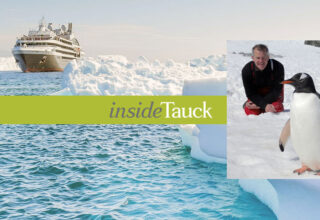
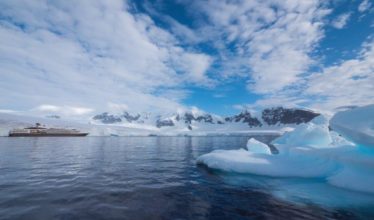
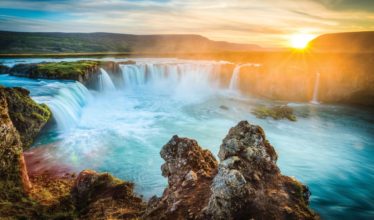
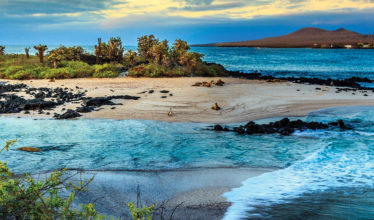
Thank you so very much for giving me the link to the Antarctica talk recording. I had registered to listen but got the time wrong and was so disappointed. So you made my day!
Do you have a cruise to go to just Falkland and South Georgia?
Hello Vilaivan,
Unfortunately, we do not offer cruises to the Falkland and South Georgia Islands.
Thanks,
Tauck
Thanks for all the great info regarding packing/clothing. We are so excited and wanted to inquire if we need to bring snow shoes and extra thick winter jacket or if we are able to rent/borrow from the ship during Zodiac excursions.